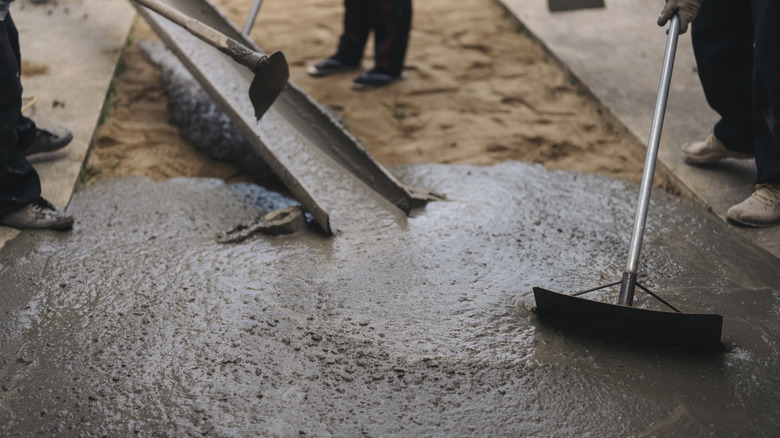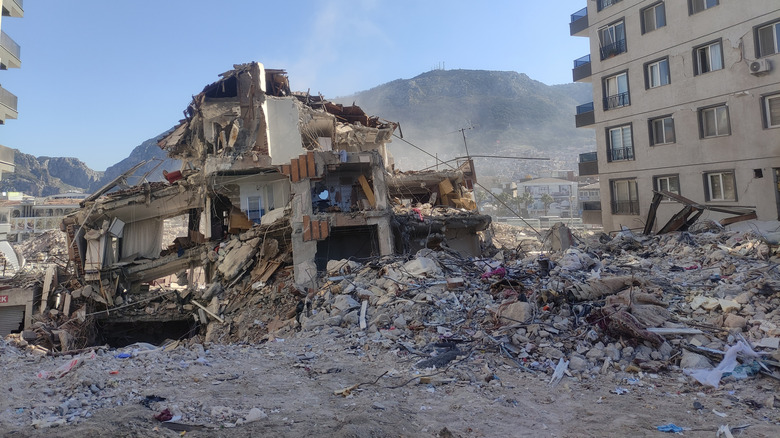What's Inside Concrete? The Science Behind The World's Most Used Material
You walk on concrete every day without thinking about it. That sidewalk, your driveway, the foundation of every building around you; it's all made from essentially the same recipe. Funnily enough, most people think that concrete is just cement mixed in with some rock, but that's not the full story. It's actually one of the most sophisticated chemical reactions happening right under our feet. We use more concrete than any other substance on Earth except water.
We're talking about 4 billion tons every single year: That works out to about 1,100 pounds for every person on the planet. Yet ask anyone what's actually in concrete, and they'll give you some vague answer about cement and gravel. The real story is probably way more interesting than that. The stuff holding up our entire civilization is basically a slow-motion chemical explosion that can keep going for decades after it's poured. Humans have been perfecting this recipe for over 2,000 years, even though we only recently figured out why it works so well.
Four ingredients, one chemical reaction
Now, actual concrete happens when you combine four things: cement, sand, water, and gravel. The interesting part is how these materials come together on a molecular level. Portland cement, for instance, takes up a good 10-15% of the mix, and is considered the star of the show. You get it by heating up some limestone and clay to about 2700°F, and grinding the outcome into an ultra-fine powder. Throw in some water to the equation, and it triggers this process called hydration, which then transforms the mixture from liquid to rock-solid.
The sand and gravel aren't just filler, they're the skeleton that gives concrete its strength. They're called aggregates, and end up accounting for roughly 75% of the final product. The way that these two play off of each other is quite intriguing as well. The gravel pieces naturally create a space of sorts within the mixture, which the sand fills right up, creating a tight matrix that can sustain incredible loads. If the ratio for even one of these substances was off, you'd end up with a sub-par product that would crumble or crack up within a few months from pressure.
While water is the MVP that makes everything happen, it can also be concrete's biggest enemy if not incorporated correctly. Add too much of it, and the cement can't fully hydrate. Getting this balance right is what separates amateur concrete from the professional-grade material that can last centuries.
How concrete got smarter
Thanks to a lot of innovation and research, the concrete that we have today is way better than what our grandparents had. Engineers now have the resources to control exactly how concrete works by tinkering with the chemistry at a molecular level. Some of our best, high-performance concrete can now hit strengths of over 20,000 PSI, which is strong enough to construct skyscrapers that can cosplay the Leaning Tower of Pisa without cracking.
We now have admixtures, which are chemical additives that are designed to fine-tune how concrete behaves. Superplasticizers, for instance, make concrete a lot more malleable while not affecting its strengths. Air-entraining agents, on the other hand, create millions of microscopic bubbles that go a long way in preventing freeze-thaw damage. There are also accelerators that decrease the setting time for emergency repairs, and for when you want to increase the setting time for massive, time-consuming pours.
You can also find self-consolidating concrete that flows right around rebar and into different shapes without any vibration. It's wild to think about how far the technology has come. What used to be a simple mix is now this high-tech, customizable material that can bend, flow, heal, and hold up massive buildings without breaking a sweat. We don't always notice it, but concrete is doing a lot more than just sitting there; and chances are, the stuff holding up the world around you is way smarter than it looks.


